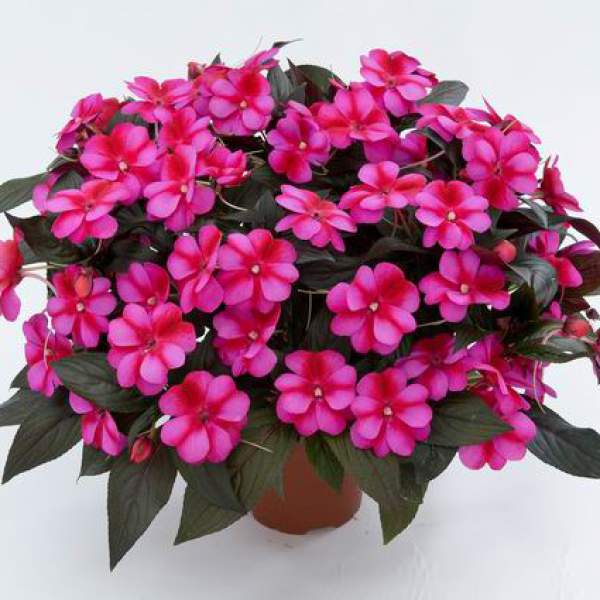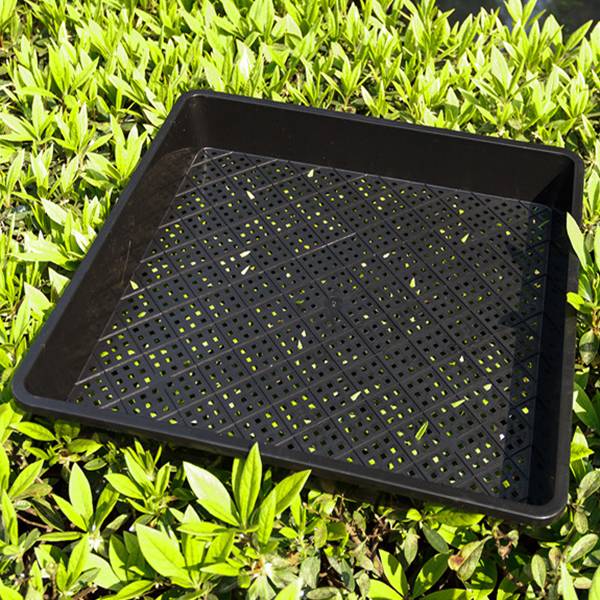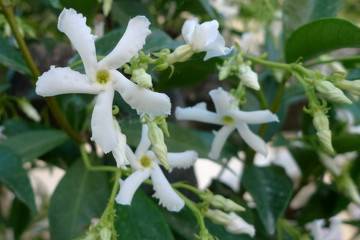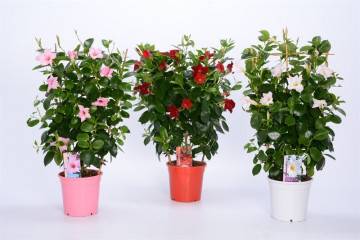Balsam room - home care
Content:
An attractive and profusely blooming balsam flower, due to its unpretentiousness, enjoys well-deserved love among flower growers and is widespread. The people call it differently. He is often called "Vanka wet", "Ogonyok" and even "Touchy". As the evening approaches, hundreds of flowers of different shades are revealed on the plant.
Transplant after purchase into a pot
Balsam purchased from a flower shop must be kept for several days before being transplanted into a new pot and fresh substrate. The plant must acclimatize to new conditions for it. Also, quarantine for three to four days will enable the grower to observe the plant and determine if it is affected by pests or diseases.
The new plant in quarantine should be separate from the rest of the house flowers. If there is no place, then it is better to immediately process it with phytoverm, even if pests are not visible. In any case, you need to carefully examine the bush for the scabbard.
What is needed for landing
For planting, you need to prepare equipment, materials and soil. The plant itself should also be prepared in advance by watering it thoroughly several hours before the procedure. This will make it easier to remove it from the pot.
Pot
When choosing a container for balsam, you need to take into account that its roots are underdeveloped and the roots are shallow. When transplanted into a large pot, most of the soil will be empty and the roots will be at the top. This can cause acidification of the substrate and rotting of the root system. A shallow pot with a diameter of 14-16 cm will be suitable.
Soil mixture
The soil is prepared to be breathable and light. For preparation, it is necessary to take in equal parts a mixture of sod land, compost, leafy soil, river sand and humus.
Drainage
The following materials can be used for drainage: pebbles and gravel, vermiculite, crushed stone or ceramic shards. The drainage should be 2-3 cm, according to the height of the laid material at the bottom of the pot.
Required inventory and materials
For transplant you will need:
- gloves;
- secateurs - for trimming damaged roots;
- activated crushed carbon - for dusting the cut parts of the plant;
- pre-settled water for irrigation.
You can transplant balsam, provided that it is still unblown.
Step-by-step planting process
When choosing a clay planter, it is necessary to get rid of the burnt limescale inside. To do this, you need to fill it with water before transplanting and let it stand for a day. Old plastic and clay pots are washed, treated with a strong solution of potassium permanganate, for surface disinfection, washed and dried.
The successful growth and formation of the plant after transplantation is ensured by the drainage system.A drainage layer of 2-3 cm allows you to smooth out small irrigation slips. For these purposes, the following are suitable:
- pieces of brick;
- shards;
- expanded clay or gravel.
Removing balsam from an old pot is not an easy task. A plentifully watered flower in advance must be carefully removed from the pots, trying not to destroy the earthen lump. With such a transplant, the flower will quickly recover and grow.
How to plant balsam
The plant is lowered into a prepared pot with drainage to a depth of 2-3 cm. The root collar should be just below the edges of the pot. The neck of the plant must not be buried. All the remaining space between the old earthen lump and the walls of the pot is filled and lightly compacted with a new moistened substrate.
When choosing a wide pots, several varieties of balsams can be planted in it at once. The composition will turn out to be original and colorful, due to the combination of plants with inflorescences of different colors.
Like any house plant, balsam needs care and good care. However, it will not require a lot of effort and time.
The bush is watered with pre-prepared settled water with the addition of a potassium permanganate solution for soil cultivation. The water with the solution should be slightly pink in color to avoid scalding the plant.
Plant propagation
Balsam is propagated by cuttings and seeds. The first method is easier to implement and therefore more common.
Propagation by cuttings
By cuttings, you can propagate such perennial popular varieties of balsam as Creeping, Cutie, Crown or Waller's balsam.
Thanks to this method, the varietal characteristics of the crop are fully preserved. The result is quickly achieved: having carried out cuttings in May, at the end of summer you can already admire the appearance of a flowering plant.
Cutting technology:
- A healthy plant is chosen, from which the apical shoots of young twigs with 3-4 internodes about 7-10 cm long are cut off.
- At the cutting, only the upper 3-4 leaves are left, all the lower ones are removed.
- For better rooting, the tips of the petioles are dipped in a phytohormone solution.
- The cuttings are dipped in containers with settled water until they sprout roots.
Further, home care for cuttings of indoor balsam will consist in changing the water in the container, until the roots appear.
Balsam from seeds - growing at home
Growing balsams from seeds is a painstaking and time-consuming way. But thanks to him, flower growers can grow the most modern balsam hybrids at home.
Procedure:
- The seed is treated for several minutes in a weak, pink, potassium-manganese solution.
- Then they are soaked in warm water for 1 day.
- A layer of drainage with a height of 2 cm is laid out at the bottom of the sowing tray, and expanded clay or fine gravel on top.
- Prepared soil is poured into the container, which is spilled with "Fitosporin" for disinfection a day before planting.
- Seeds should be sown on the soil surface in a compact manner, at a distance of 3-4 cm from each other.
- Lightly sprinkle them with earth on top and spray with water using a spray bottle.
- From above, the container with seeds is covered with a film, forming a mini-greenhouse.
The container with seeds is placed in a warm place and periodically ventilated by opening the film and sprayed. It is necessary to ensure that the soil is constantly wet, otherwise the seeds may die.
It takes 3 to 4 months to grow balsam seedlings from seeds. Fortified seedlings can be planted in a pot.
Balsam room: home care
The plant loves bright, diffused light, but at home it needs to be shaded from direct sunlight. Thanks to the bright light, new flowers form on the balsam. Indoor balsam grows well at temperatures of 10-18 ° C in winter and 18-22 ° C in summer.
How to water balsam
Balsam requires abundant watering. In the spring-summer period, it should be watered every other day, preventing the soil from drying out. In winter, watering is necessary once every three days, as the soil dries out. Also, the overflow of the plant should not be allowed, the roots of the plant will rot and the plant will die.
Top dressing
Due to the abundant flowering, balsams need constant feeding from spring to autumn. Ideally, they should be fed every 3 weeks with an all-purpose houseplant fertilizer.
Nitrogen fertilization leads to the build-up of leaves and shoots and may be the reason why balsam does not bloom.
Caring for balsam during flowering
At home, with good care, the plant blooms almost year-round. Watering during the flowering period requires abundant, the soil should in no case dry out.
You need to feed the plant every 10-14 days all the time while the plant is blooming. A complex mineral fertilizer is used for flowering houseplants.
Features of care during the rest period and preparation for winter
In the winter season, the intensity of watering the plant should be reduced, waiting for the substrate to dry to a depth of 1 cm.However, it is impossible to completely dry out the soil, since this is fraught with falling buds and weakened flowering, as well as slower development and growth of balsam.
If the balsam begins to turn yellow, shed its buds, and the lower leaves fall off, then the plant does not have enough nutrients and sunlight.
Balsams, especially new varieties, are well-deservedly loved by flower growers from all over the world. This plant can be successfully grown in hanging pots on the balcony and used in the design of flower beds in the garden. The main thing is to learn how to care for balsam and follow these rules.






















